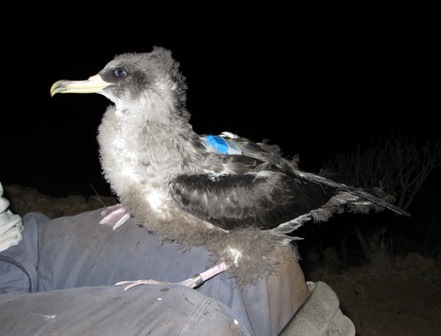Light pollution is an emerging source of mortality for petrels. Fledglings are disoriented by artificial lights in their maiden night flights from their nests to the sea, leading to high mortality. The majority of our knowledge about this phenomenon comes from rescue campaigns, and mainly consists of the reporting of species and numbers. Unfortunately, rescue campaigns cannot identify the colony of origin of birds grounded by artificial lights, which is valuable information to assess and manage this mortality source. GPS data-loggers were used to track the flights of Cory's shearwater Calonectris diomedea fledglings from nest-burrows to ground, and ring recoveries to evaluate the light pollution impact on the colonies. Birds were grounded at locations closer than 16?km from colonies, and 50% were rescued within a 3?km radius from the nest-site. Rescue locations showed radiance values greater than colonies, and flight distance was positively related to light pollution levels. Breeding habitat alteration by light pollution was more severe for inland colonies. Scientific-based information is provided to manage dark refuges facilitating that fledglings from inland colonies reach the sea successfully. informacion[at]ebd.csic.es: Rodríguez et al (2015) GPS tracking for mapping seabird mortality induced by light pollution. Scientific Reports 5, 10670. Doi 10.1038/srep10670
http://www.nature.com/srep/2015/150602/srep10670/full/srep10670.html

 Las altas temperaturas están provocando que las lagunas y las marismas de Doñana pierdan agua rápidamente
Las altas temperaturas están provocando que las lagunas y las marismas de Doñana pierdan agua rápidamente




